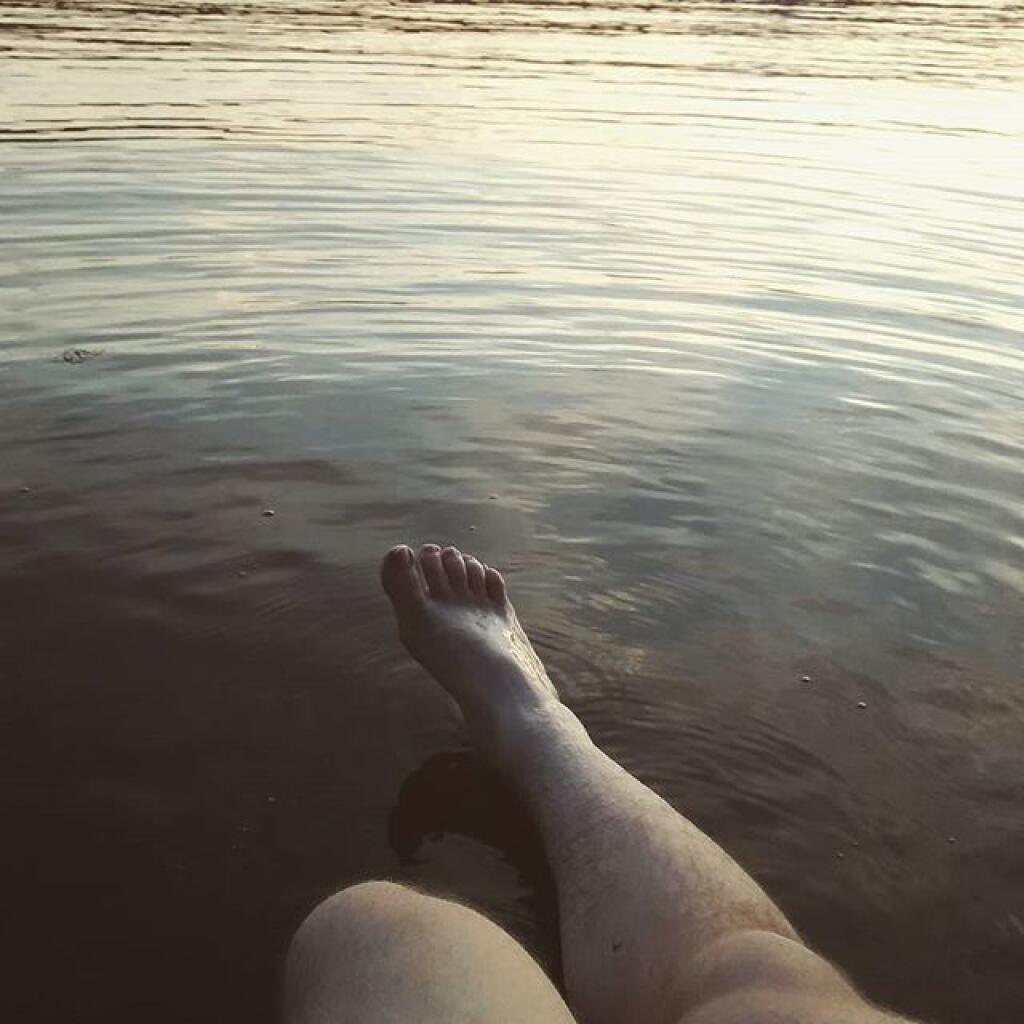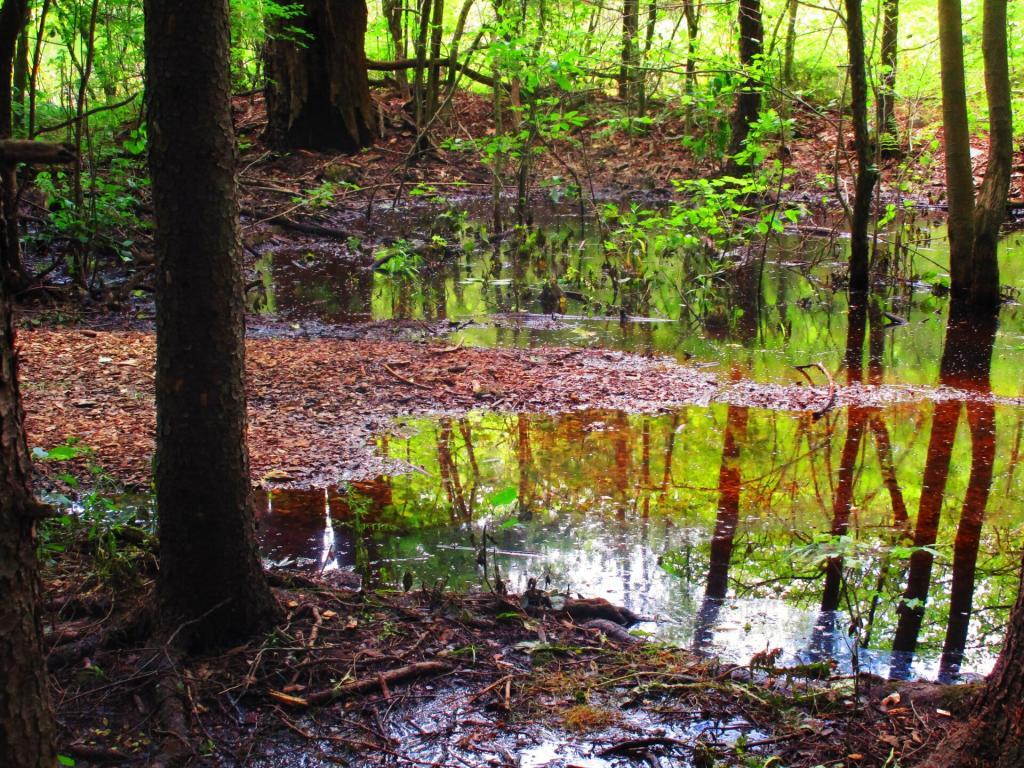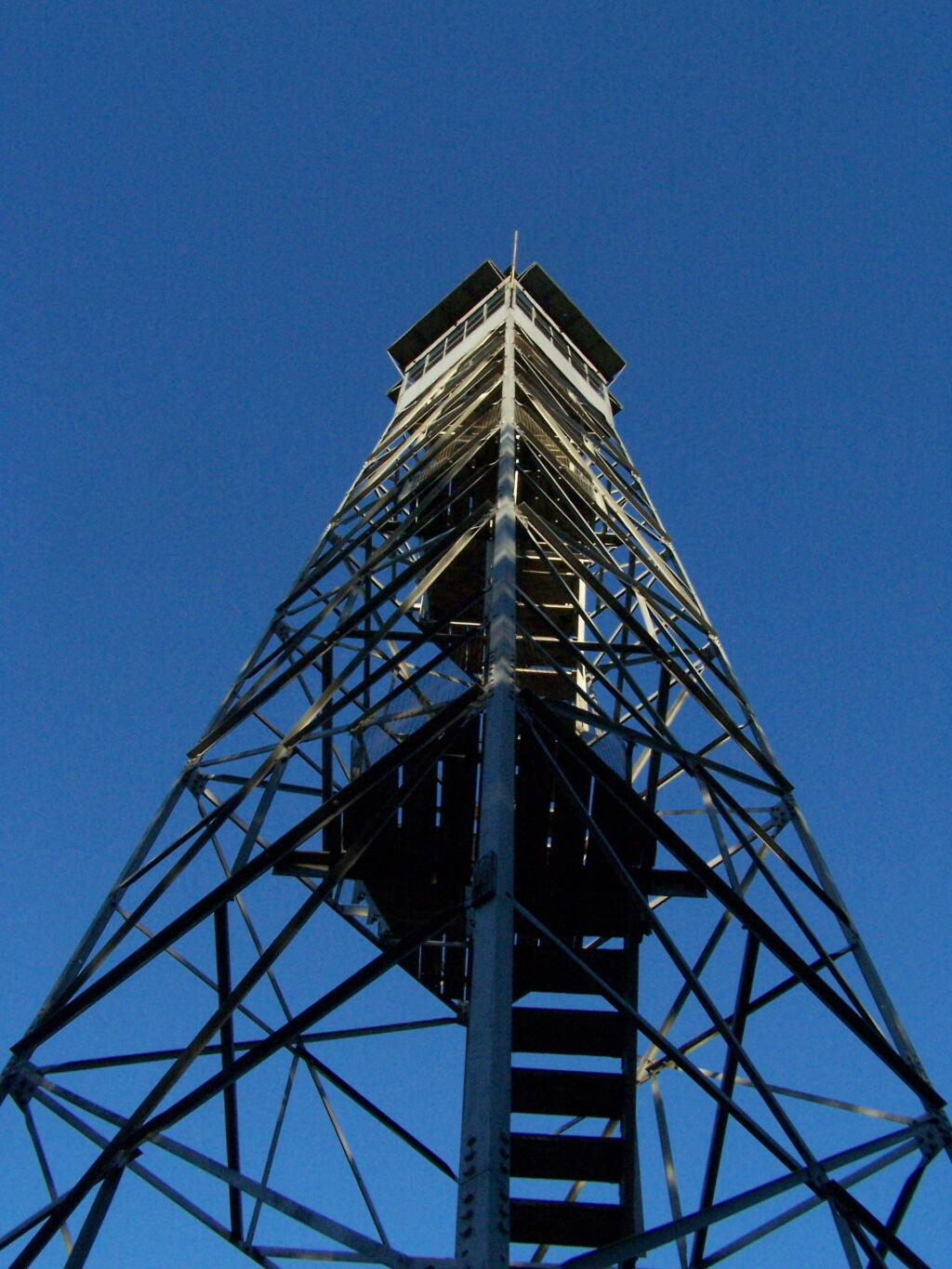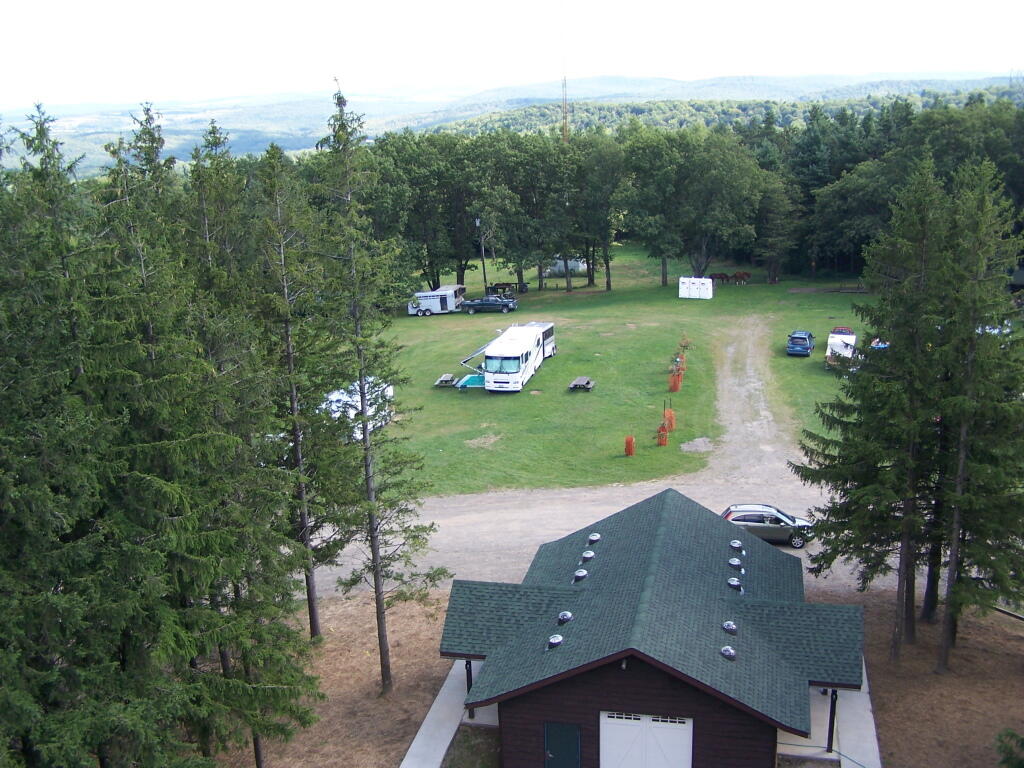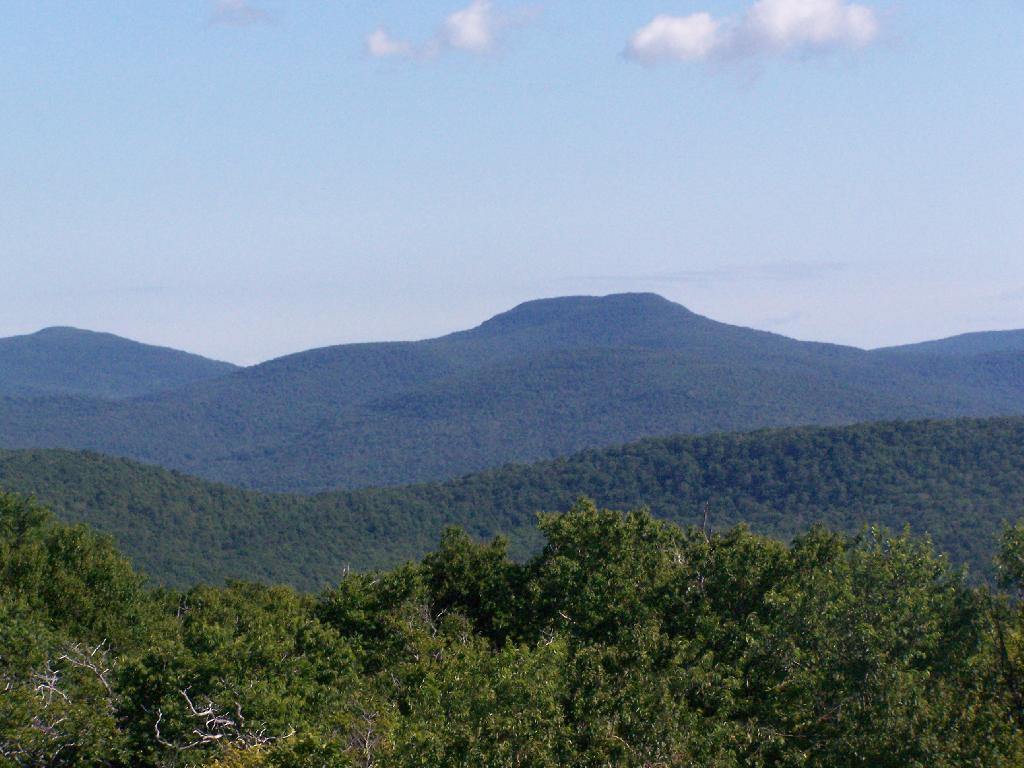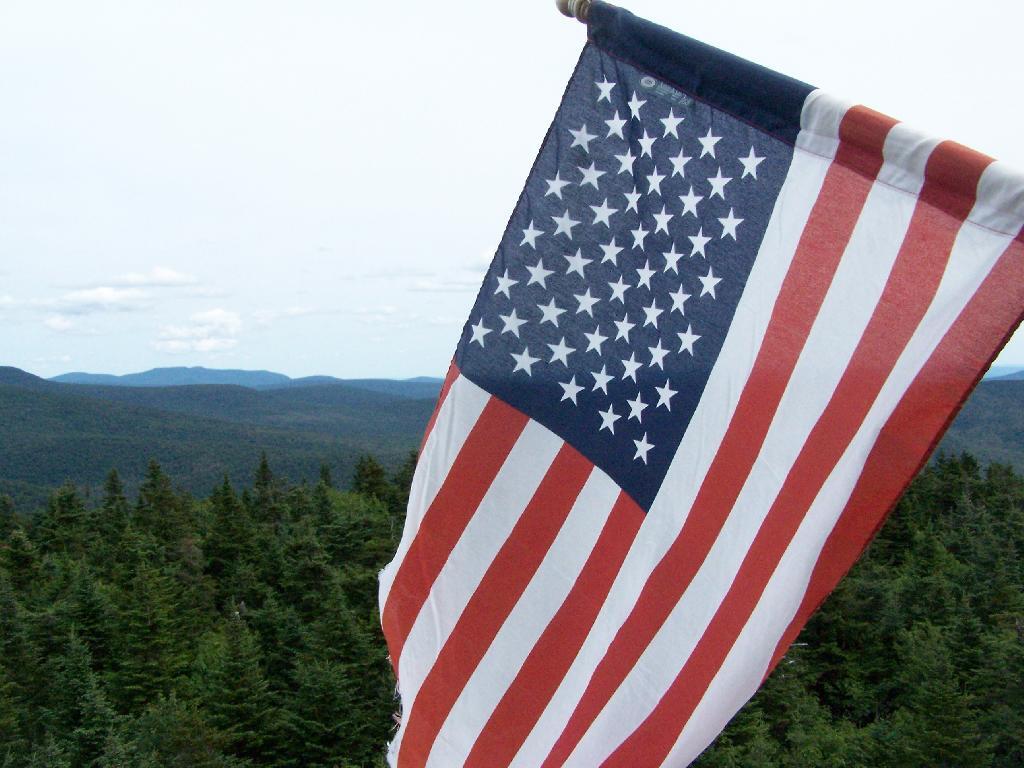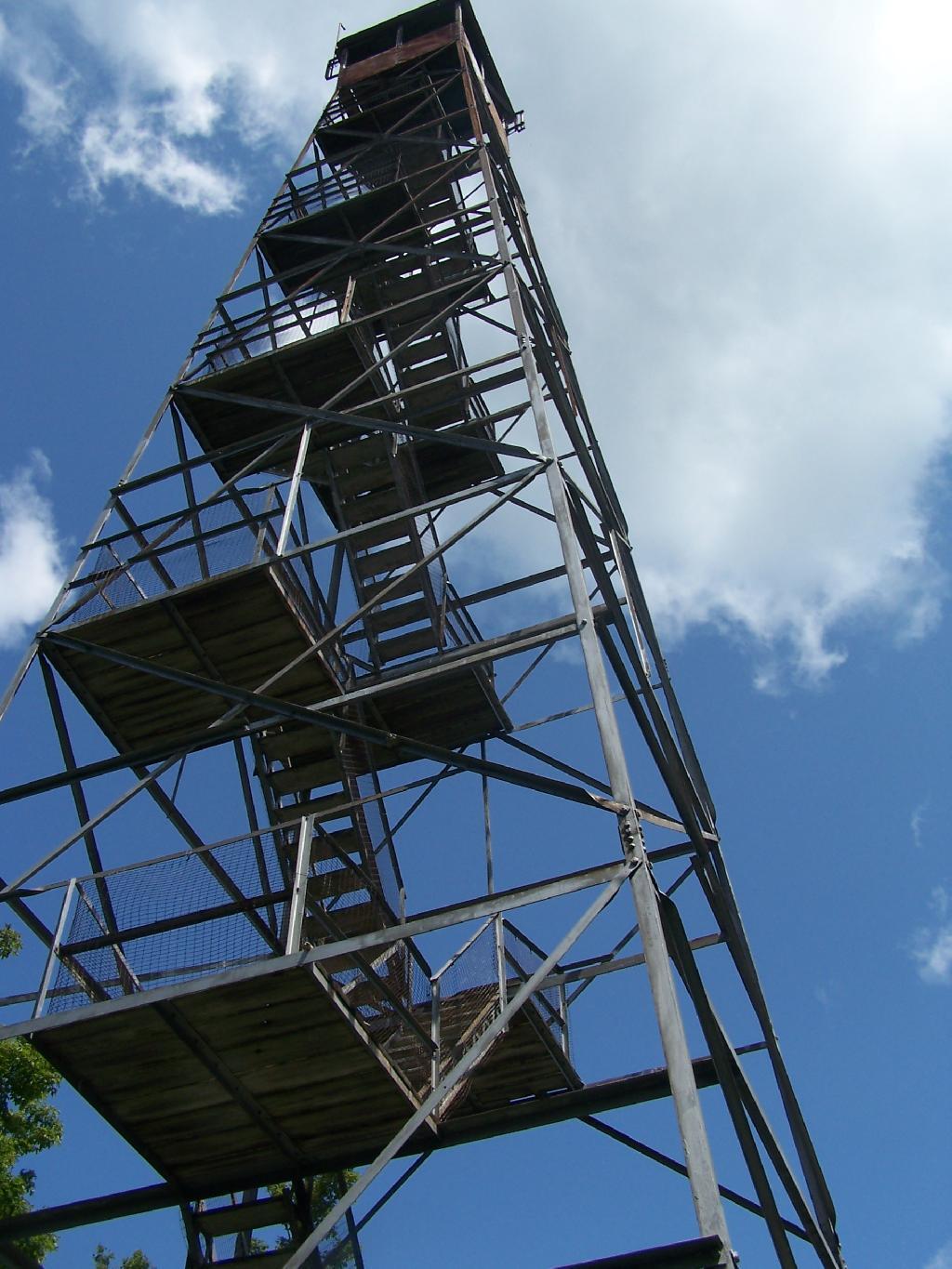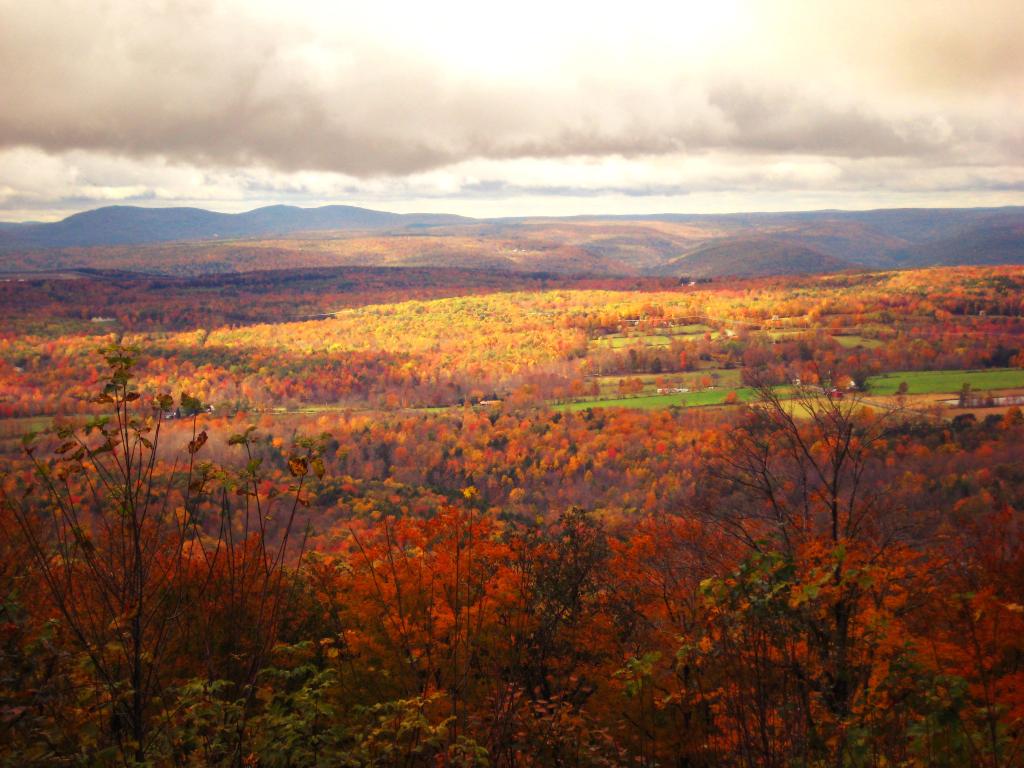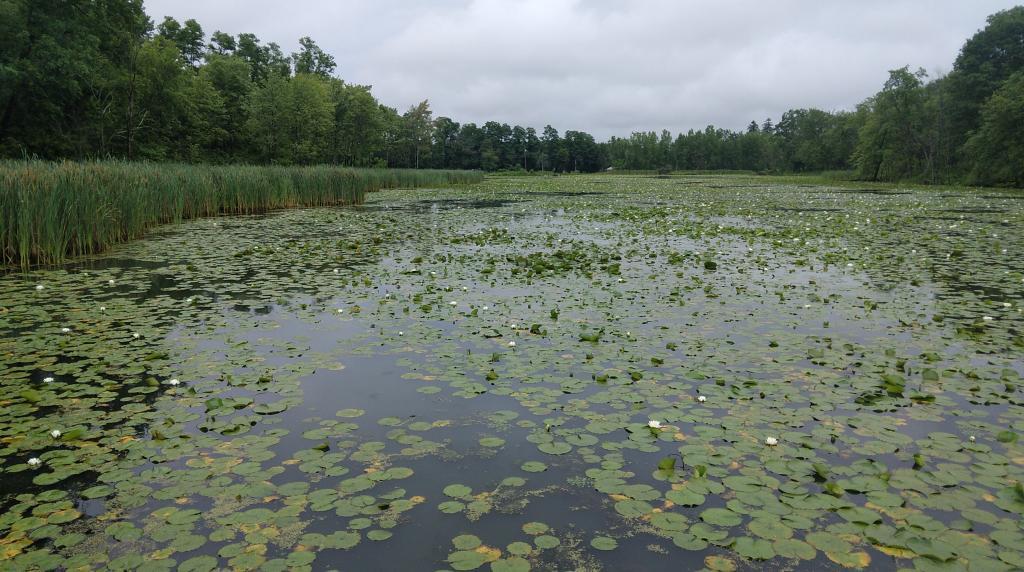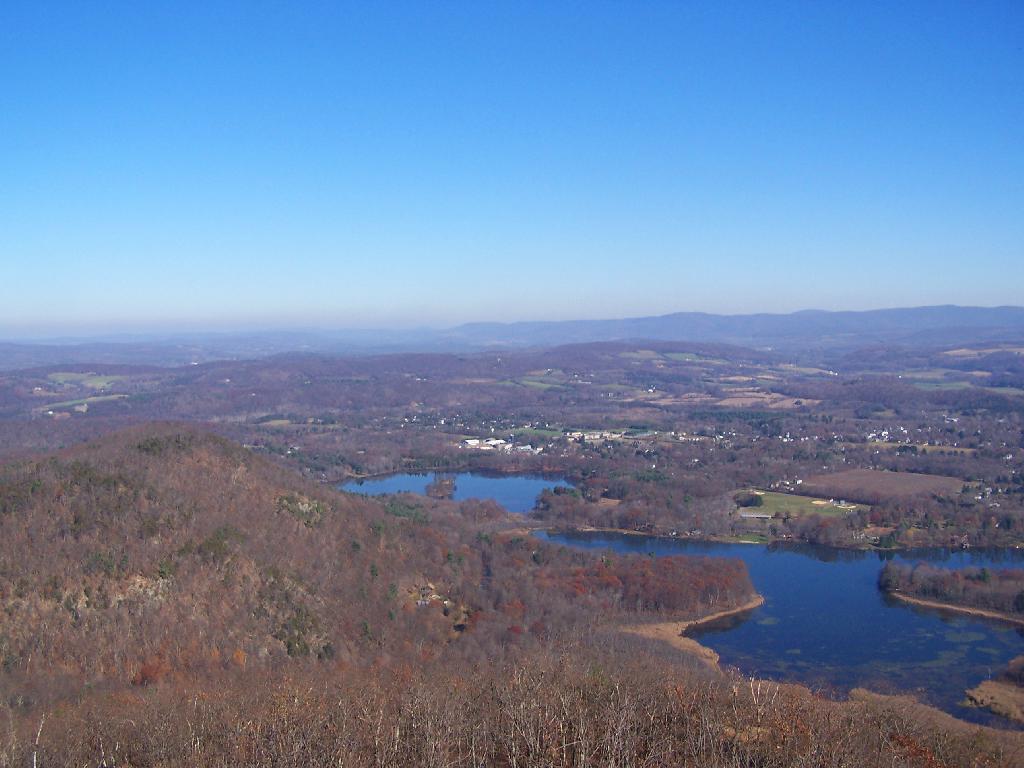Good Morning! As I now have cellphone service, here is a brief update from Sunday. More updates latef.
As soon as I got into Maryland then West Virgina I lost cellphone service. I am surprised, as except for the Adirondacks and a few valleys in Western NY or the Catskills, I usually have good cell service. The same thing is true with the Northern Tier of Pennsylvania, and heck I had good service most of the way down through Pennsylvania on US 219 until I entered Maryland. Then there was no service in Maryland and West Virgina, anywhere I went along US 219 and down through WV Route 32. This is why I haven’t posted a update since yesterday morning.
Saturday night was a pleasant night up on Loleta Grade Road at the Allegheny National Forest. I had previously camped on Loleta Grade Road, but never took the part of Loleta Grade beyond where it leaves the East Branch of the Millstone Creek. Loleta Grade Road (FR 133) gets a lot narrower and somewhat narrower past the Millstone Creek and passes several marshlands and has a handful of campsites on it. It turns out the portion of Loleta Grade Road by East Millstone Creek is closed for reconstruction. They have a done such a nice job at building and improving roadside campsites throughout the Allegheny National Forest, while adding earthen barriers or rock barriers to protect forest resources from people driving past the campsites. Each campsite has a natural stone fire ring and many of them hardened with gravel. Loleta Grade was pretty with the fall colors. I took several pictures and will be uploading them as Internet or cellphone data service becomes available. The sun didn’t rise above the horizon of the forest until well after 8 AM this morning, although first light came a little before 7 AM. The campsite I was at was Forest Road 777, which I knew was a sign of good luck for the day.
Drove Along PA 3002 along the Clarion River to Ridgeway. That’s another part of the Allegheny National Forest I had never explored before. The Clarion River was pretty with the leaves turning, and looks like a lot of fun to paddle at least downstream. It has a good current but is deep and flat enough that it’s not white water by any means. I stopped along one of the State Game Lands where a creek – which I don’t know the name of – cross through a hollow in peak colors. It was beautiful. Eventually I made it to Ridgeway, and much like you would expect from that town, the approach into the city was a steep drive down. Ridgeway stunk of the hydrogen sulfide from paper manufacturing.
Then it was down US 219 all the way down to West Virigina. It’s a beautiful drive, but oh my gosh, does US 219 wind and have some steep descents and climbs. It also hits a lot of hick towns – some quite pretty and others dying coal mining towns – that are mostly sustained these days by government services and healthcare. Some nice farm lands and great sweeping vistas along the way, but not a lot of places to pull over and take pictures. To make matters worst I drank a lot of coffee this morning, and after a piss break at McDonalds bought more coffee and spent have the afternoon looking for places to take piss breaks. US 219 certainly winds a lot. The locals were blowing past me whenever they could pass me or whenever I would pull over. I don’t consider myself to be a slow driver, but with those narrow lanes and windy roads, I certainly had to hold back my speed a bit especially with my big lifted truck.
US 219 becomes an expressway after Clariton and the first ten miles of it is spectacularly beautiful. It reminds me a lot of the Taconic Parkway, only more modern and wider but with many of the same sweeping views of farm country and color packed hills. Some of the steepest hills I’ve ever driven on an expressway. Eventually the terrain becomes more rolling, with some larger farms. I ended up getting off a few different exits looking for a place to piss, and then got back on not finding one. I didn’t stop for a badly needed piss break until I reached a fast-food place just over the line in Maryland, where US 219 joins I-69 for a brief concurrency. The clerk at Burger King in Maryland there had a strong Southern Accent, but strangely enough when I got into West Virgina, the clerk at the gas station sounded modestly Appalachian but without much of a noticeable accent – even less then the Midwestern/Appalachian accent what I heard in Northern Pennsylvania. Being that I was in a hurry to get to West Virgina to figure out where I would camp and realizing that the Flight 92 memorial was 9 miles from US 219, I decided against visiting the memorial. It’s possible it was closed on Sunday. I got off US 219 at this one exit and drove through this large, old coal mining town with narrow roads and houses on the edge of a cliff, facing a mountain whose top had been blown off years ago to produce bituminous coal. At the bottom of the mountain was a vast tank that was being used to collect and treat acid mining discharge. Kind of sad to be driving past a place that time in many ways had left behind with nothing but a toxic legacy. Pennsylvania has a lot of old, small towns that were heavily built up during the industrializing era of America but seem to have little purpose today besides cheap housing and traditional communities.
South of the Pennsylvania Turnpike US 219 suddenly becomes a two lane road. You have to exit the expressway and then drive on another pokey local part of US 219 then you get diverted on a completed section of US 219. It’s obvious from the construction that Pennsylvania plans to continue the US 219 expressway all the way to Maryland border – a project that is requiring the blasting away of whole mountains and building massive bridges through the steep terrain of the Laurel Highlands. After driving a few miles on the congested highway, you get back on the expressway for a few miles before it drops back down two lanes, and your in Maryland.
It’s pretty wild driving I-69 in Maryland with it’s steep hills and the 70 MPH speed limit. At times I was pushing Big Red almost to the floor climbing over the mountains at the speed. I-69 is very twisty and steep. By interstate standards it seems to be sub-prime in design, but that may have to do more with the steep Appalachian terrain then the engineering that had to blast a 70 MPH expressway through. Heading west on I-69 traffic was fairly light. Stopped at a nice overlook on US 219 just after getting off of I-69.
I don’t have much good to say about Garnet County, Maryland or the state of Maryland more generally. US 219 crosses more of Western Maryland then most other roads, cutting through the widest portion of Maryland between Pennsylvania and West Virgina. A lot of farms in this part of the state, perched up on hills. Evidence of coal mining was all over, and honestly the terrain didn’t differ that much from the Laurel Highlands of Pennsylvania. Farther south of I-69, past a town named Accident, the terrain became more rolling and you could see to the east the Blue Ridge Mountains. A lot of wind turbines on the mountains. Unlike Pennsylvania, no burn barrels in Maryland. Apparently they don’t like the smell of burnt plastic as much as Pennsyltuckians. A lot of traffic on US 219 near Silver Lake in Maryland and the city of Oakland was pokey. People must come from Baltimore to vacation in Western Marlyand. But then it opened up to farm country, and I was in West Virgina without warning except for a brief county sign and a very stern sounding sign warning against littering – a $25,000 fine, lost of license, and jail for littering. Didn’t stop people from leaving litter on the road though as seen driving down US 219.
Maryland is probably a state best known for Spiro Agnew, our country’s only Grecian Vice President. Too bad he had to resign as Nixon’s Vice President for graft as Governor of Maryland and failing to pay on taxes on that graft. Also Martin O’Mallary, the former Democratic Governor best known for his unpopular gun control laws. Of course the whole time driving through the commonwealth, I drove carefully with an eye for cops, because I vaguely remember that Maryland is a state where they are really strict about their fender law, and are known to ticket people driving jacked up pickup trucks with tires sticking out past the fenders, as is the case with my truck. Lot of people have lifted trucks in Western Maryland, but that may be a southern thing too. People in Western Maryland may be relatively wealthy, with money from Baltimore and Washington suburbs to pay for their jacked up truck addiction. Most had fenders but not all did. I am also not an expert on Maryland gun laws, but I figured I was probably okay just driving through the state with a cased, locked, and unloaded shotgun and 22 in back of my truck. I made it through the state, and took a deep breath once I realized I was in West Virigina. I have nothing good to say about Maryland, the state that is dominated by shitty Baltimore and Washington suburbs, with a neck following the Potomac River quite a ways out west. On the way back I will probably take US 220 through Maryland, which cuts through a lot narrower section of Western Maryland just to cover my fears of that god awful state that sticks between a lot of Pennsylvania and Virgina and West Virgina.
US 219 returns to being steep, windy, and narrow as you head into West Virigina and start climbing through the Blue Ridge Mountains. Actually, it gets narrow with sharp turns in Maryland before you quietly cross – almost unannounced in West Virgina. The road is incredibly narrow, curvey, and steep climbing through the mountains. You think you’d never make it there, and eventually your in Thomas, WV. It seems like Thomas was a really hoping touristy place this Columbus Day Weekend, but as far as I could tell it lacked most of the chain stores. They probably are in a more populated place. Just down the road is Davis, WV. Davis has a bit more of a main street, it reminds me a lot of Lake Placid minus of course the Olympic tracks. Bought gas in Davis, one of those stations you have to go inside. I was hoping to hear the clerk’s strong West Virgina accent, but she didn’t have much of one. One of the older people in the store certainly had a classic West Virgina/Southern accent though. From there I took West Virgina 32 to the first major forest road I saw on map – FR 13 which runs along the top of Canaan Mountain. It was farthest north forest road of significance along the way, so I figured it was worth a try.
Forest Road 13, besides the unlucky number is astoundingly beautiful with marshlands and the kind of marshy forest you would associate with Dolly Sods Wilderness to the east of this area. Not a lot of maples of deciduous trees up on the top of the Canaan Mountain, but as you head down Forest Road 13, it descends into a deep hollow, following along a creek. Lots of colors from the hardwoods in this valley. This portion of Forest Road 13 is a bit scary to drive, because it’s only one lane wide, and difficult if not impossible in many portion for two cars to pass. Get too far off the road, and you could roll your truck, and assuming you don’t hit a tree, fall 100 feet or more into the hollow. A good gravel road, but so narrow once you down by the stream.
Put the truck in 4×4 low on the way back up the hill in case I had to crawl past a car on the way back up. Fortunately, I did not. Of course, when I got to camp I wanted to take the truck out of 4×4 low. Almost had a heart attack when I couldn’t get the transfer case to switch back to high. I forgot to go from 4×4 low to 4×4 high (and two-wheel drive), you have to have the truck in neutral when you hit the lever, otherwise nothing happens. I thought I was going to get stuck only being able to crawl somewheres, and have to find out what kind of services I could get by flagging down some random person. Literally had to get out the manual to find the answer – I knew there was a procedure, and they recommended you have the truck rolling when you switched – but forgot you had to be in neutral before shifting the case.
A few miles up Forest Road 13 from where I was camping was a big military encampment – there are like 50 brown Silverado pickups with brushguards parked up there. I thought it was Forest Service personal trucks – a big group for sure – but the rear plates said US Army. The guys I saw appeared to be military too. I don’t know if it’s military training or maybe it’s one of the groups that comes up here searching for old unexploded bombs that are occassionally found in the forest (the US Army used this area for war games and testing bombs during World War II). They are tent camping. I guess this must be part of wilderness training of some sort. Not something you would think you would find in the forest for sure.
On the way down into the valley, I spotted two campsites that were definite possibility for camping. I ended up camping for the night at one of the campsites, under starry skies. I don’t think the stars are quite as good here as the southern Allegheny National Forest, because we get some light pollution from the Washington DC metro area out here, but still much better then most of Upstate NY. A fairly big open campsite, but that was fine as I had extension cords to reach the lights where they needed to be on the trees. Reheated pork roast from a previous trip on the grill then started a fire. It was delicous and a nice evening. The sunset here is similar to that of the Allegheny National Forest – while I am 250 miles farther south, on the whole I’m jut as far west. Before dusk, somebody from Virgina stopped by to ask for directions to an overlook. I was shocked somebody would ask me, a New Yorker for directions. I guess like I must look like I’m from West Virgina with my big jacked up truck.
Sorry this is a long post, but it was a long day with a lot of adventures and stories to tell. I’m sure I will have more for tomorrow. At least I don’t have to drive any long distances tomorrow, as that US 219 got tiring with all the winding narrow road. I won’t be taking US 219 back north to Pennsylvania. It’s one of these roads you want to take once to see what the countryside is like, then avoid it because it’s so pokey, narrow, twisty, and steep. I probably will take US 220 up to I-99 and then overnight next Saturday night in Wellsboro in Grand Canyon Country, assuming the weather is good. I guess I could drive all the way back in Albany via I-81 / I-88 but that’s a hell of a trip in one day. I want to stay over somewheres in Pennsylvania on the way back, and I’d prefer to avoid the cities that I-81 runs through (Harrisburg, Scranton, among others).
